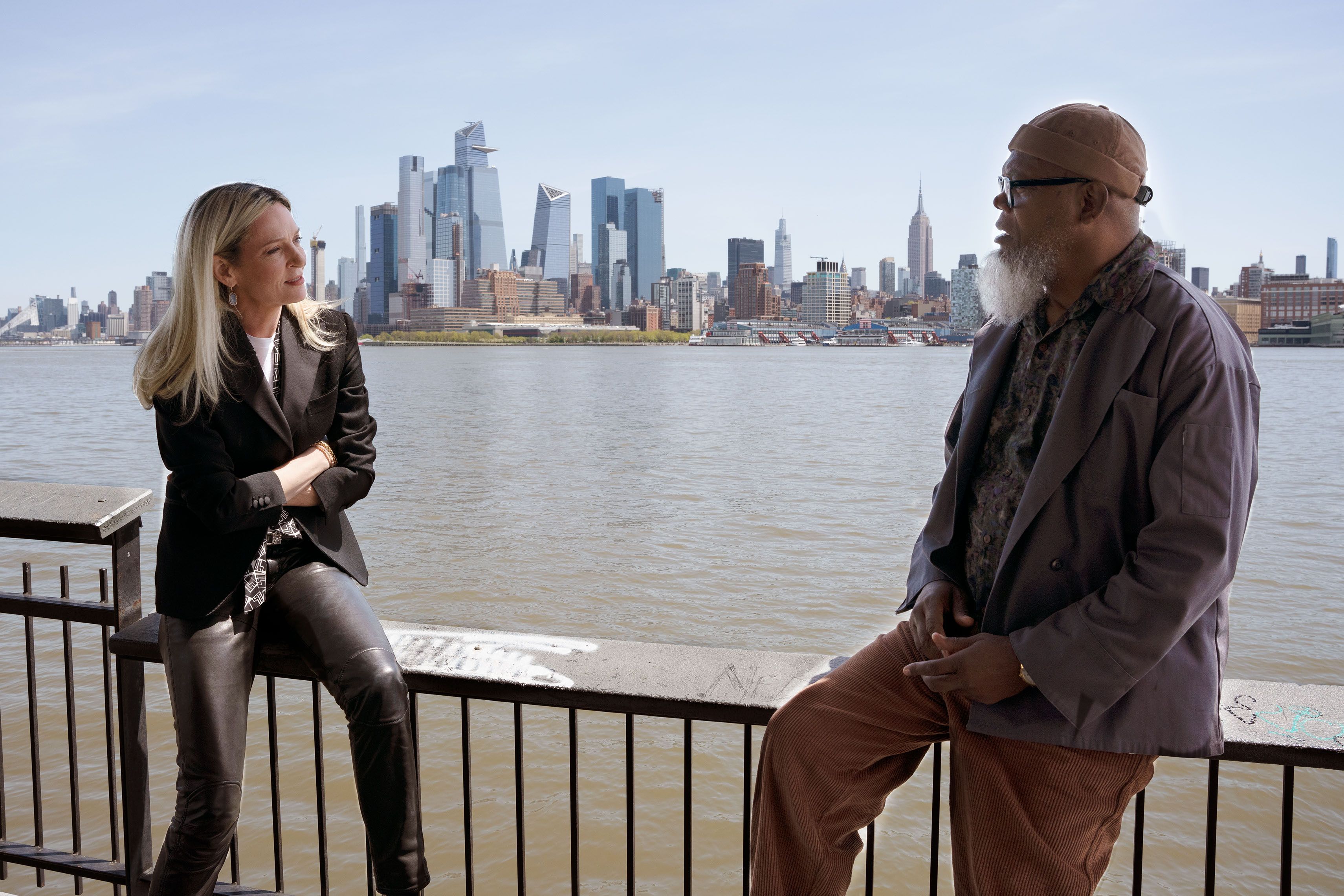There’s a really good movie lurking at the corners of The Kill Room. As the story unfolds, you can clearly see some elements that, if pursued further, could greatly elevate the experience. However, the Nicol Paone movie – a follow-up to the director’s 2020 debut Friendsgiving – chooses to play it safe most of the time, despite the narrative begging for it to go deeper.
The Kill Room centers around Patrice (Uma Thurman), a down-on-her-luck art dealer who can’t seem to catch a break and is slowly contemplating bankruptcy. It all changes when she comes in contact with Gordon (Samuel L. Jackson), a drug dealer who wants to use her art gallery as a front for money laundering. In order to do that, they decide to create an underground artist called “The Bagman” (Joe Manganiello) who ends up becoming an overnight avant-garde sensation.
Just by its synopsis, you can tell that The Kill Room has a great potential for satire and dark humor – both of which are certainly all over the story. The movie goes right for the jugular on the subjective nature of art, and even though it treats abstract and expressionist art with a good dose of disdain, it makes a common but still good point about how elitist the art “appreciation” world is with how value can be manipulated and how taste can be doctored.
Art Is the Focus in 'The Kill Room'
At the same time, there’s the sense that The Kill Room could have gone way further with it. The movie presents art from several different points of view, and starts several debates and storylines that could greatly elevate the conversation about it, but most of them get abandoned. The story could easily revel in being a high-stakes dispute between artists and art dealers (more or less like the Cruella remake did), but this ends up becoming just background noise for something else.
Of course, The Kill Room never indicates that it wants to be a humongous critique or commentary of the art world, since it also has a whole crime storyline to develop. The problem is, this aspect of the movie is also never taken to its fullest. The movie tries to imply it, but you never really feel like Patrice’s life is in danger for getting mixed up in mob bosses’ affairs. Also, even though he's a cold-blooded killer, you never feel like Manganiello’s Reggie is a threat, since the character is pretty charismatic and his cruelty is mostly downplayed by the story.
Dark Humor Can Only Do so Much for 'The Kill Room'
This type of watering down of a character works well when there’s a lot of dark humor to be taken from it but, in this department, The Kill Room also sticks to the surface. The irony of a killer becoming an acclaimed artist is not lost on the movie, but it all plays out almost like Jonathan Jacobson’s script came up with this concept and then thought it didn’t need to be fully developed. Of course, balancing thriller and dark humor elements is no easy feat, but TV shows like Barry have already proven that it’s possible to convey the terrors and dangers of the underworld of crime while also being hilarious in the process.
Luckily for The Kill Room, though, it has Uma Thurman in the lead. The actor’s presence really elevates every scene she’s in, and it’s a joy to be able to empathize with Patrice’s desperation. There is a growing realization that she’s one breakout away from making it as a great art dealer. Her genuine involvement with her only true artist and her relationship with her assistant are the film's strongest elements. Thurman navigates all facets of the character with ease, and it’s never boring to see her onscreen – even when the story stoops down to scatology to make jokes.
Thurman’s scenes only get better when she’s paired with Jackson. The duo handles their dialogue like a walk in the park, and you can tell that The Kill Room tries to make the most of it. Jackson is mostly being his easygoing self, which is more than enough for you to embrace his character. However, Jacobson’s script makes it clear to viewers that Gordon can be a threat if he wants to. That is especially noticeable with Gordon’s first encounter with Patrice, in which he’s nothing but cordial but you can sense the threat implied by his words and posture.
Ultimately, The Kill Room is not a bad experience by any means, but by the end of it, you get the sense that you were offered bits and pieces of what the movie could be if it either decided to further develop its characters or just take one of its elements and run with it. The point that it makes about art is certainly good to start a conversation. However, it all falls flat when it portrays art lovers and criminals as either snobs or naïve.
Rating: B
The Big Picture
- The Kill Room has great potential for satire and dark humor, but it only scratches the surface and fails to fully develop its art-related storylines and debates.
- The movie tries to balance being a crime thriller and incorporating dark humor, but it doesn't fully succeed in pulling this off
- Uma Thurman's presence in the film elevates every scene she's in, and her chemistry with Samuel L. Jackson is a highlight, but overall the movie falls short in fully developing its characters and making a meaningful commentary on the art world.
The Kill Room is in theaters now.


Comments
Post a Comment